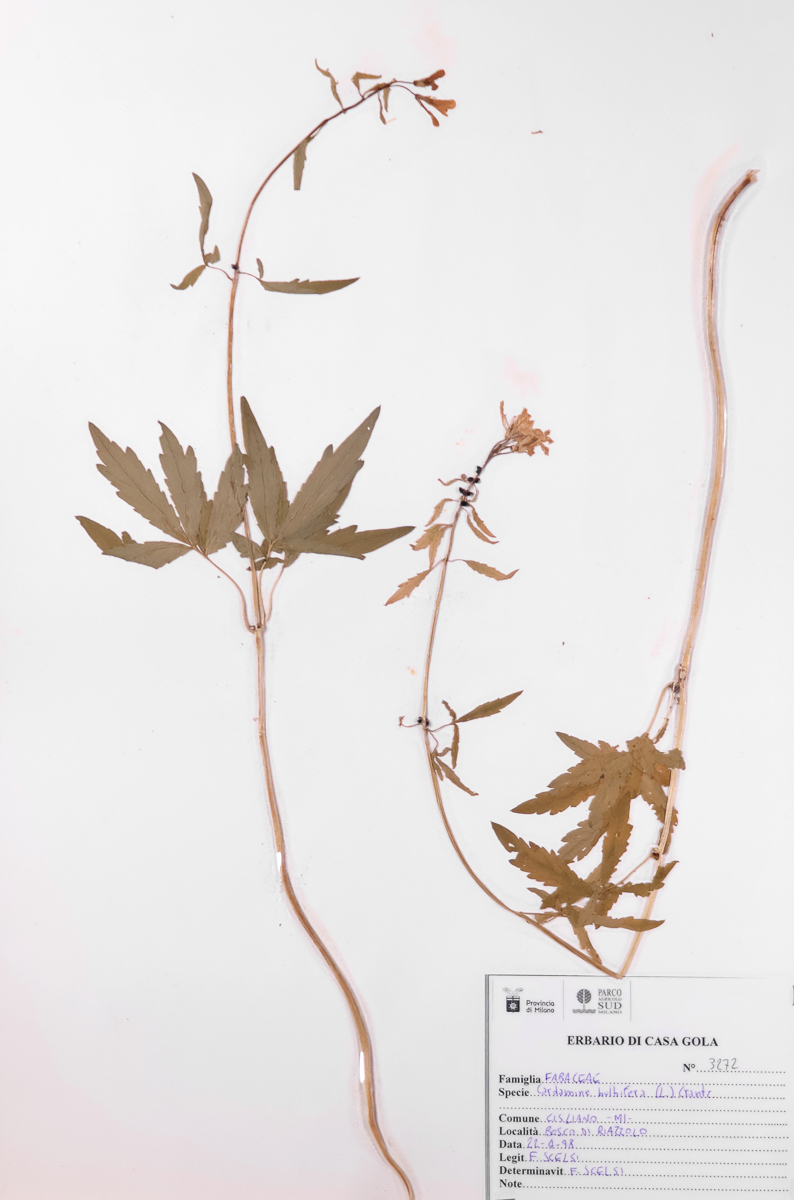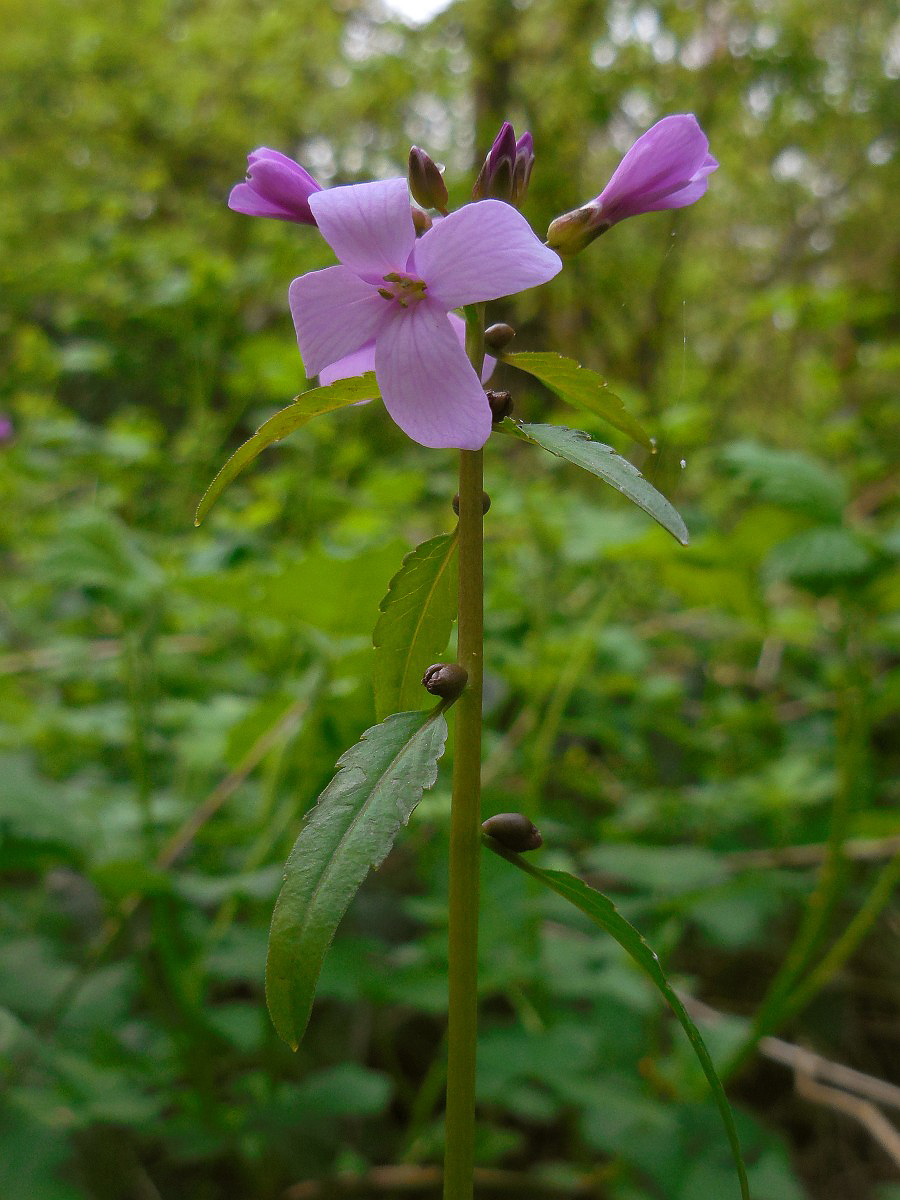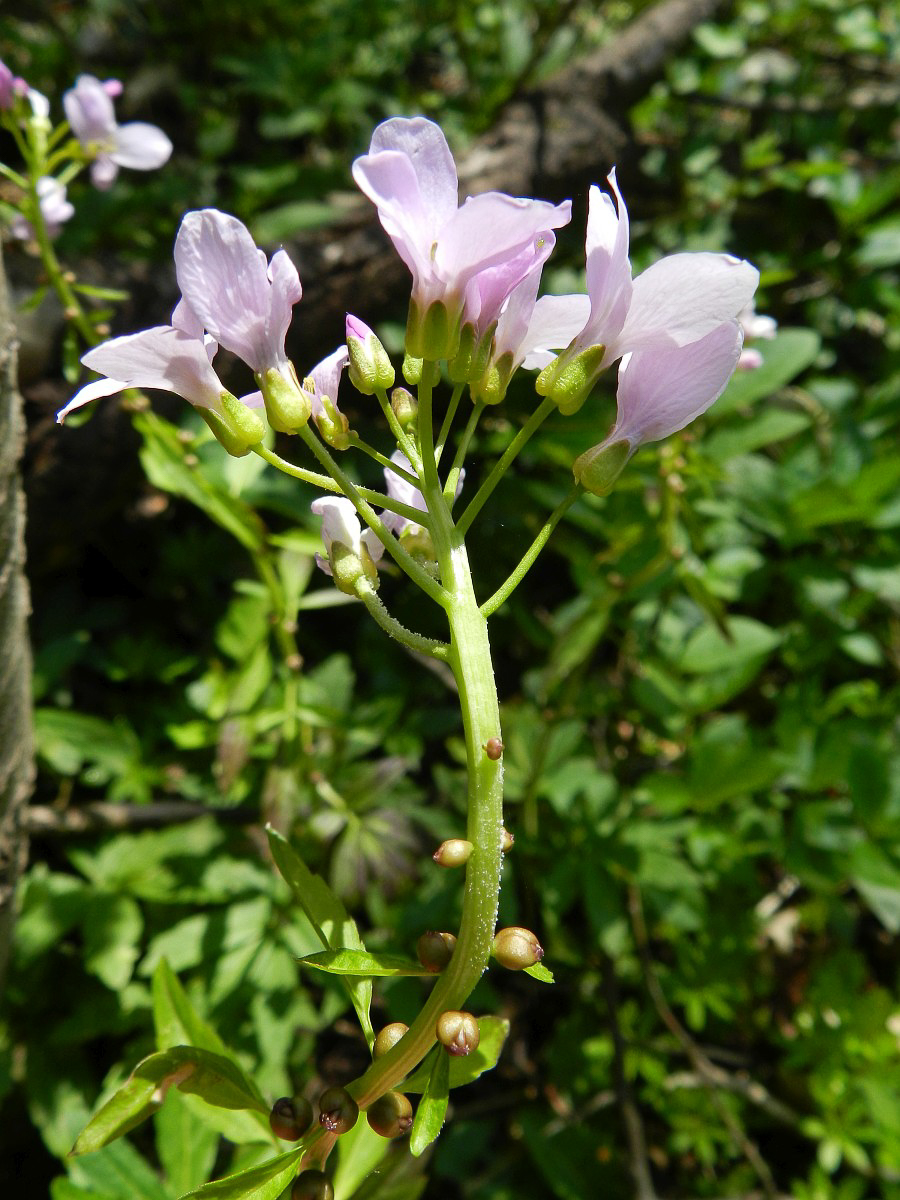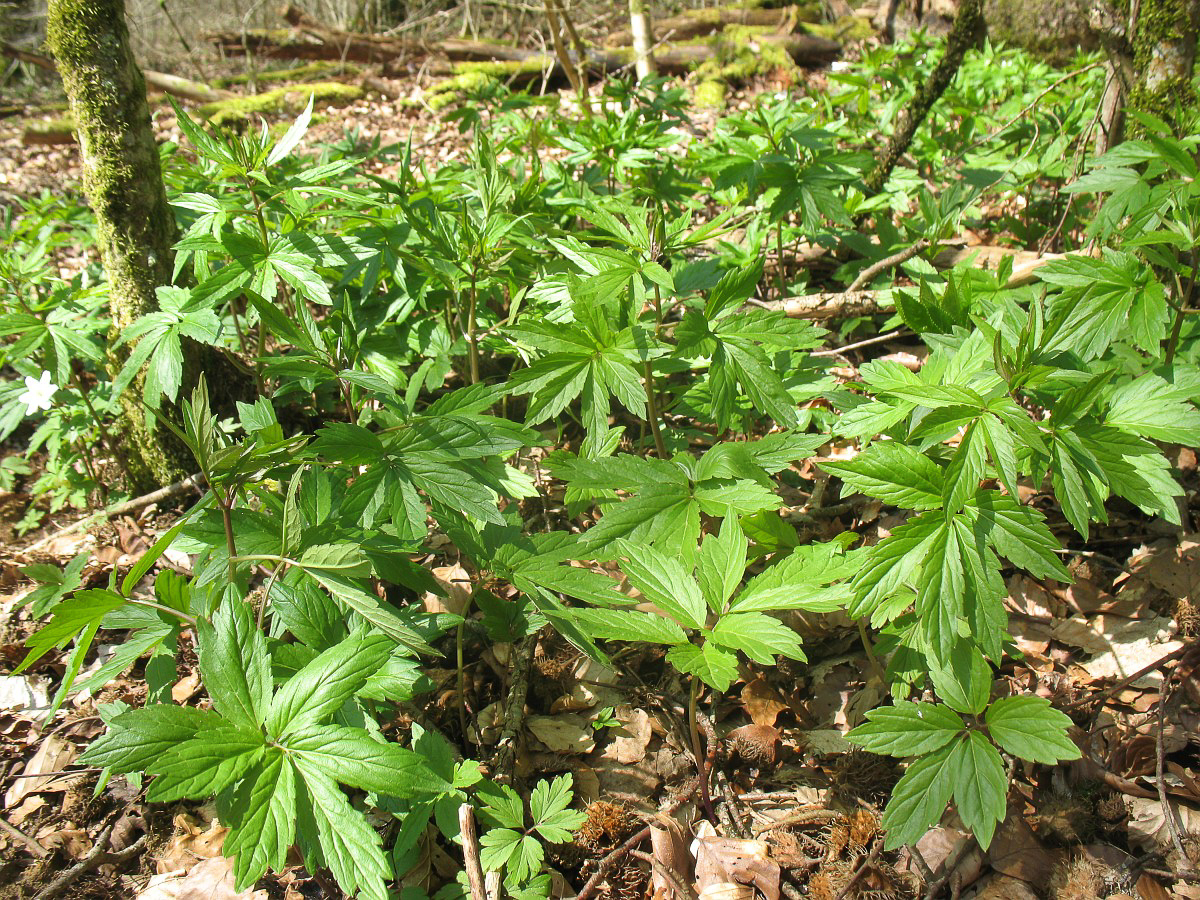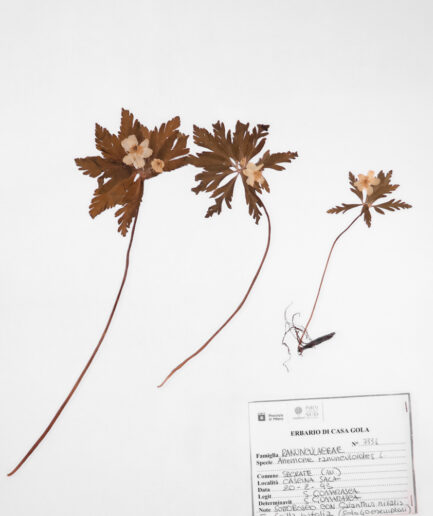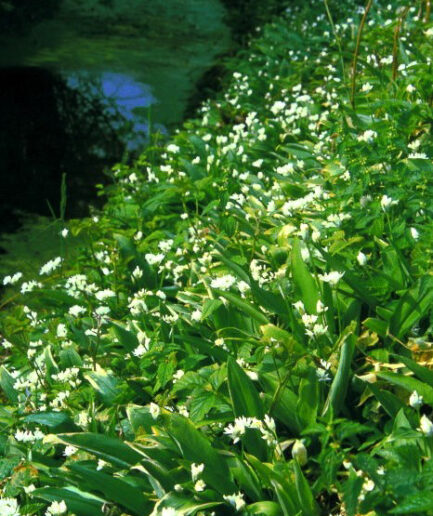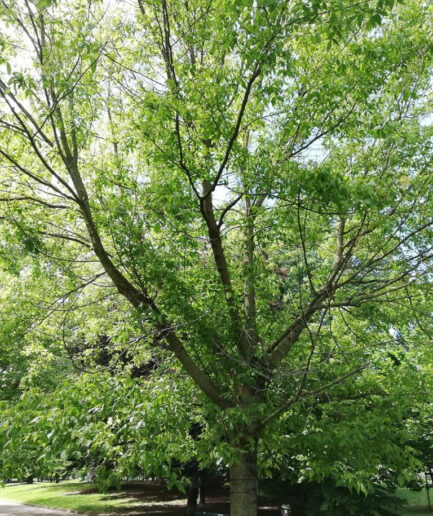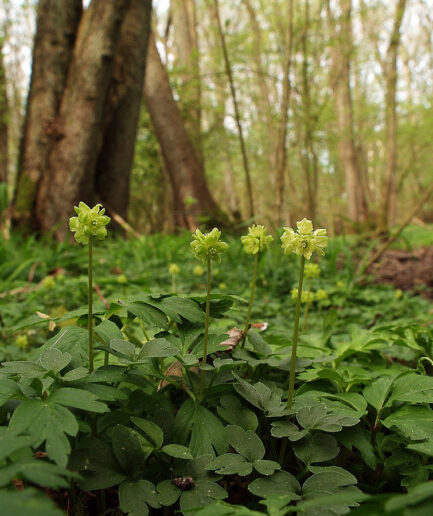Coral root
Scientific name: Cardamine bulbifera (L.) Crantz
Family: Brassicaceae
MORPHOLOGY
Habit and dimensions: Perennial, herbaceous plant with a large whitish, fleshy, and scaly rhizome: covered with triangular scales that are remnants of previous germinations, reaching a height of 30÷40 cm.
Stems: Erect, simple, sparsely branched stems, violet-colored, more or less pubescent in the lower part.
Leaves: The lower leaves are pinnate, generally composed of 5 segments (also 3 or 7), lanceolate in shape with a cuneate base. The upper leaves are simple, alternate, lanceolate, and progressively reduced; all have dentate margins. At the axil of the upper leaves, there are pyriform bulbils, initially violet then black: they are organs of vegetative propagation.
Flowers: Hermaphrodite and tetramerous flowers, grouped in terminal inflorescences in corymbs or short pedunculated racemes; they have a calyx with 4 glabrous, sac-like, free sepals, greenish-violet in color; the corolla with 4 clawed, free, rounded petals, pink-violet in color and marked by darker longitudinal veins. It blooms from March to June.
Fruits and seeds: The fruits are rarely present erect siliques formed by 2 flat valves arranged longitudinally, containing small seeds arranged linearly.
DISTRIBUTION AND HABITAT
Present throughout Italy, except in the major islands and in Val d’Aosta. It grows in beech forests, chestnut groves, mixed woods, between 100 and 1,800 m.
USE
Edible species, the leaves can be used in salads or cooked, appreciated for their pleasant watercress-like aroma. The bulbils can be used like lentils.
Photo: Used under a free license from Saxifraga and Ed Stikvoort, Rutger Barendse.



